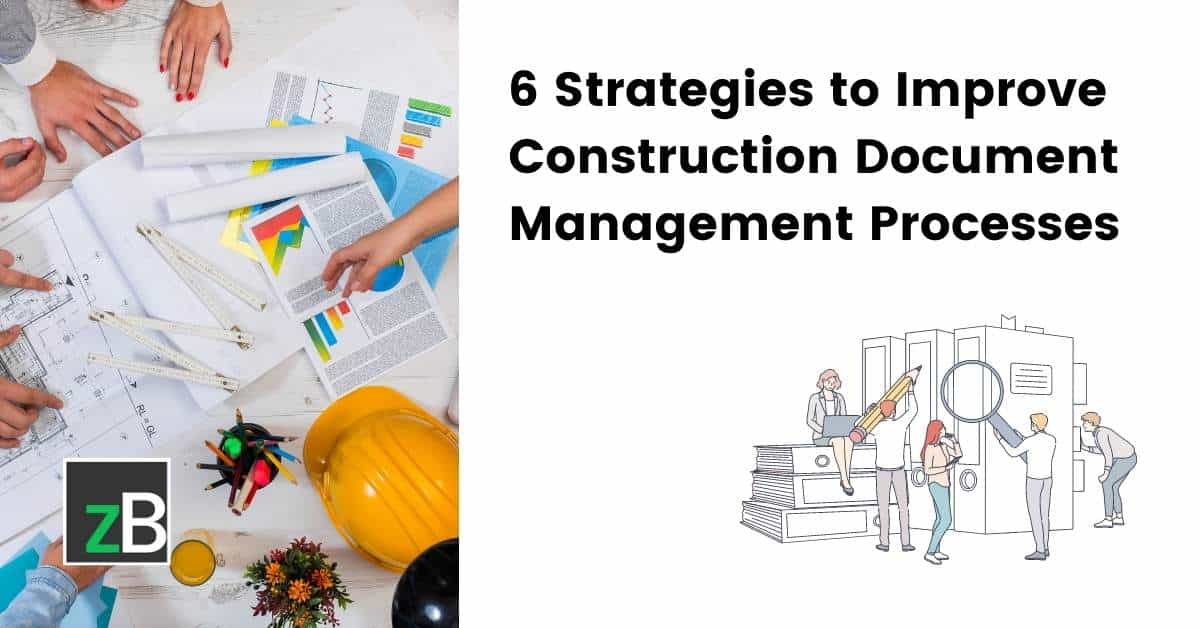Building Better Projects: The Function of Construction Document Management in Success
Building Better Projects: The Function of Construction Document Management in Success
Blog Article
Optimizing Job Cooperation: Architect's Finest Practices in Building And Construction Record Monitoring
In the complex world of architectural projects, the effective administration of building documents stands as a foundation for success. Amidst this complexity lies an important inquiry: just how can engineers enhance cooperation procedures to boost task outcomes?
Leveraging Cloud-Based Platforms
Leveraging cloud-based systems is a basic technique for contemporary architects in optimizing building record management procedures. By transitioning from conventional paper-based systems to cloud services, designers can streamline partnership, improve document ease of access, and improve general project performance. Cloud-based platforms offer designers the ability to store, share, and upgrade construction documents in real-time, making certain that all staff member have access to the most existing details regardless of their place. This accessibility promotes seamless interaction and control among job stakeholders, resulting in fewer mistakes and delays in the building process.
Furthermore, cloud-based systems offer a protected setting for saving sensitive project information, supplying file encryption, normal backups, and user permission settings to secure information integrity. Engineers can additionally gain from the scalability of cloud solutions, allowing them to change storage space ability and capability based upon job needs. On the whole, leveraging cloud-based systems empowers engineers to maximize their building record monitoring processes, driving better partnership, effectiveness, and success in their projects.
Implementing Variation Control Equipment
Having actually developed the benefits of cloud-based platforms in building and construction record monitoring, engineers can now boost their paper control processes by carrying out Variation Control Equipment. Variation Control Equipment (VCS) are crucial tools that track modifications in records, making sure that employee are always working with the current and most precise information. By applying VCS, engineers can maintain a central database where all project documents are saved, allowing smooth partnership while reducing the threat of errors and variation conflicts.
This feature is specifically useful in building jobs where style versions and alterations are common. This openness not only enhances responsibility however additionally assists in solving conflicts or disparities that may occur during the job lifecycle.
Developing Interaction Procedures
To make certain efficient and effective project coordination, architects need to develop clear and robust interaction protocols within their building and construction document management processes. Interaction methods define the techniques, frequency, and networks where group members exchange details, updates, and responses. One crucial element of developing these protocols is establishing a central interaction system where all project-related discussions and paper sharing can happen. This system might be a task management software, email strings, or cloud-based storage options. By establishing standards on just how details is shared and just how employee interact with each other, architects can improve the flow of data and avoid miscommunications or hold-ups in the construction procedure.
Moreover, communication procedures ought to additionally include standards on exactly how to take care of conflicts, adjustment orders, and urgent issues that might arise during the project lifecycle. Establishing a structured strategy to communication makes certain that all stakeholders are on the exact same web page, advertises transparency, and ultimately adds to the effective conclusion of the building project.
Making Use Of BIM Software for Sychronisation
BIM software program plays a pivotal duty in enhancing coordination amongst project group participants in the building market. Structure Information Modeling (BIM) facilitates partnership by giving a centralized system where architects, designers, contractors, and various other stakeholders can collaborate in a collaborated way. Via BIM software, project participants can access and upgrade a common model which contains detailed information about the structure style, building and construction elements, and project routines.

Moreover, BIM software makes it possible for real-time collaboration and communication amongst team members, regardless additional reading of their physical location. With cloud-based BIM systems, task stakeholders can access the most recent job information, track changes, and make educated choices promptly. Generally, leveraging BIM software for sychronisation enhances project performance, productivity, and eventually leads to effective task outcomes.
Ensuring Information Protection and Compliance
In the world of building document monitoring, guarding information honesty and making sure regulative conformity are critical factors to consider for designers and various other job stakeholders. Designers should apply robust security actions to secure delicate job info from unapproved accessibility or violations.

Final Thought
To conclude, engineers can enhance task partnership in building and construction paper monitoring by leveraging cloud-based platforms, executing version control systems, establishing interaction methods, using BIM software for sychronisation, and ensuring data security and compliance. These best practices help simplify the construction procedure, boost interaction amongst project stakeholders, and boost performance in task delivery. By adhering to these guidelines, architects can successfully handle building documents and facilitate successful project results.
Through BIM software program, job participants can access and update a common design that has comprehensive information about the structure design, building and construction components, and task schedules.
Through cloud-based BIM systems, advice job stakeholders can access the most current job info, track adjustments, and make informed decisions without delay - construction document management. On the whole, leveraging BIM software for coordination improves project efficiency, performance, and ultimately leads to effective project end results
In conclusion, architects can optimize task collaboration in building and construction file management by leveraging cloud-based systems, carrying out variation control systems, establishing communication procedures, making use of BIM software program for sychronisation, and making sure information protection and compliance. These finest methods aid improve the construction process, enhance communication amongst project stakeholders, and improve performance in task delivery.
Report this page